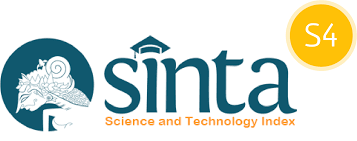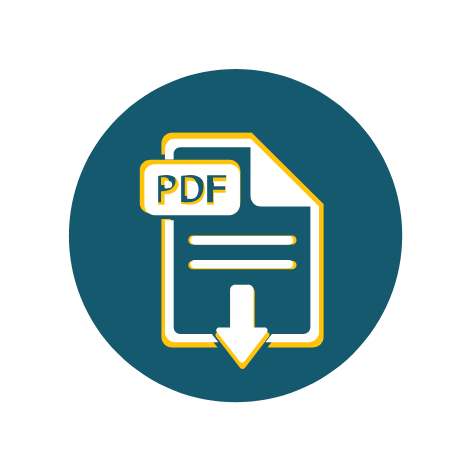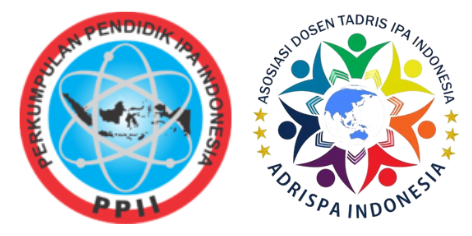Pengaruh Pergerakan Sumber Bunyi terhadap Frekuensi yang Diterima Pendengar dengan Aplikasi Smarthphone Phyphox
DOI:
https://doi.org/10.35719/vektor.v3i2.49Keywords:
Doppler effect, frequency, Phyphox, Smarthphone, Sound sourceAbstract
Tujuan dari penelitian ini adalah mengetahui pengaruh pergerakan kentongan sebagai sumber bunyi terhadap frekuensi yang diterima oleh pendengar dengan bantuan aplikasi Phyphox pada penerapan efek doppler. Efek Doppler dapat dianalisis dengan mencari hubungan antara frekuensi, kecepatan sumber suara dan pendengar relatif terhadap medium. Data yang digunakan dalam penelitian ini adalah hasil perhitungan berdasarkan data yang terekam dalam aplikasi Phyphox. Aplikasi Phyphox dapat dimanfaatkan untuk mengetahui efek Doppler yang terjadi pada sebuah sumber bunyi. Metode penelitian menggunakan metode penelitian eksperimental. Metode eksperimen yang digunakan yaitu eksperimen murni (true experimental) di mana pada pelaksanaannya mengikuti prosedur dan memenuhi syarat dari eksperimen terutama yang berkaitan dengan pengontrolan variabel, kelompok kontrol, pemberian perlakuan, serta pengujian hasil. Teknik analisis data yang digunakan dalam penelitian ini adalah teknik analisis deskriptif, yaitu dengan menghitung besar frekuensi sumber bunyi yang didengar dengan aplikasi Phyphox. Hasil analisis data dapat disimpulkan jika semakin dekat sumber bunyi dengan pendengar, maka frekuensi yang diterima semakin besar sehingga pergerakan sumber bunyi mempengaruhi besar frekuensi yang diterima pendengar.
Kata Kunci: Efek doppler, Frekuensi, Phyphox, Smartphone, Sumber bunyi
The purpose of this study was to determine the effect of kentongan movement as a sound source on the frequency received by listeners with the help of the Phyphox application on the application of the Doppler effect. The Doppler effect can be analyzed by looking for the relationship between the frequency, speed of the sound source and the listener relative to the medium. The data used in this study is the result of calculations based on data recorded in the Phyphox application. The Phyphox application can be used to determine the Doppler effect that occurs in a sound source. The research method uses experimental research methods. The experimental method used is a pure experiment (true experimental) in which the implementation follows the procedure and fulfills the requirements of the experiment, especially those related to controlling variables, control groups, giving treatment, and testing results. The data analysis technique used in this study is a descriptive analysis technique, namely by calculating the frequency of the sound source heard using the Phyphox application. The results of data analysis can be concluded if the closer the sound source to the listener, the greater the frequency received so that the movement of the sound source affects the frequency received by the listener.
Keywords: Doppler effect,frequency, Phyphox, Smarthphone, Sound source
References
Arifin, F., Indrasari, W., & Rustana, C. E. (2019, December). Pengembangan Alat Praktikum Pelayangan Bunyi Dan Efek Doppler Berbasis Modul Mikrofon Kondenser Dan Mikrokontroler. In PROSIDING SEMINAR NASIONAL FISIKA (E-JOURNAL) (Vol. 8, pp. SNF2019-PE).
Habibi, N. (2015). Perancangan Alat Ukur Kecepatan Menggunakan Sensor Ultrasonik dan Prinsip Efek Doppler. Inovasi Fisika Indonesia, 4(3).
Haisy, M. C., Astra, I. M., & Handoko, E. (2015, October). Pengembangan alat peraga resonansi dan efek doppler berbasis soundcard pc/laptop untuk meningkatkan motivasi belajar fisika siswa sma. In PROSIDING SEMINAR NASIONAL FISIKA (E-JOURNAL) (Vol. 4, pp. SNF2015-II).
Karimah, H. N., Subali, B., Ellianawati, E., Handayani, L., & Natalia, E. S. (2019, October). Pengembangan Alat Peraga Efek Doppler. In Seminar Nasional Lontar Physics Forum (pp. 47-53).
Kristiyani, Y., Sesunan, F., & Wahyudi, I. (2020). Pengaruh aplikasi sensor smartphone pada pembelajaran simple harmonic motion berbasis inkuiri terbimbing terhadap peningkatan kemampuan berpikir kritis siswa. Jurnal Pendidikan Fisika, 8(2), 138-149.
Rifai, M. R., Kurniawan, R. A., & Hasanah, R. (2020). Persepsi Mahasiswa dalam Menggunakan Aplikasi Plantnet pada Mata Kuliah Klasifikasi Makhluk Hidup. VEKTOR: Jurnal Pendidikan IPA, 1(1), 29-38.
Ristanto, S., & Santoso, D. F. (2016). Uji coba pemanfaatan software soundcard oscilloscope V1. 40 untuk praktikum efek dopler. Jurnal Penelitian Pembelajaran Fisika, 7(1), 1-7.
Sugiyono. 2012. Metode Penelitian (Jakarta: Remaja Rosdakarya)
Supasorn, S. (2012). Enhancing undergraduates’ conceptual understanding of organic acid-base-neutral extraction using inquiry-based experiments. Procedia-Social and Behavioral Sciences, 46, 4643-4650.
Syaifuddin, A., & Suryono, S. (2014). Fast Fourier Transform (Fft) Untuk Analisis Sinyal Suara Doppler Ultrasonik. Youngster Physics Journal, 3(3), 181-188.
Yuniati, L. (2011). Pengembangan media pembelajaran mobile learning efek doppler sebagai alat bantu dalam pembelajaran fisika yang menyenangkan. Jurnal Penelitian Pembelajaran Fisika, 2(2).
Downloads
Published
How to Cite
Issue
Section
License
Copyright (c) 2022 Siti Nurrohmah, R. Rahayu

This work is licensed under a Creative Commons Attribution-ShareAlike 4.0 International License.
Authors who publish with this journal agree to the following terms:
- Authors retain copyright and grant the journal right of first publication with the work simultaneously licensed under the terms of the CC BY-SA 4.0 License that allows others to share the work with an acknowledgment of the work's authorship and initial publication in this journal.
- Authors are able to enter into separate, additional contractual arrangements for the non-exclusive distribution of the journal's published version of the work (e.g., post it to an institutional repository or publish it in a book), with an acknowledgment of its initial publication in this journal.
- Authors are permitted and encouraged to post their work online (e.g., in institutional repositories or on their website) prior to and during the submission process, as it can lead to productive exchanges, as well as earlier and greater citation of published work.







